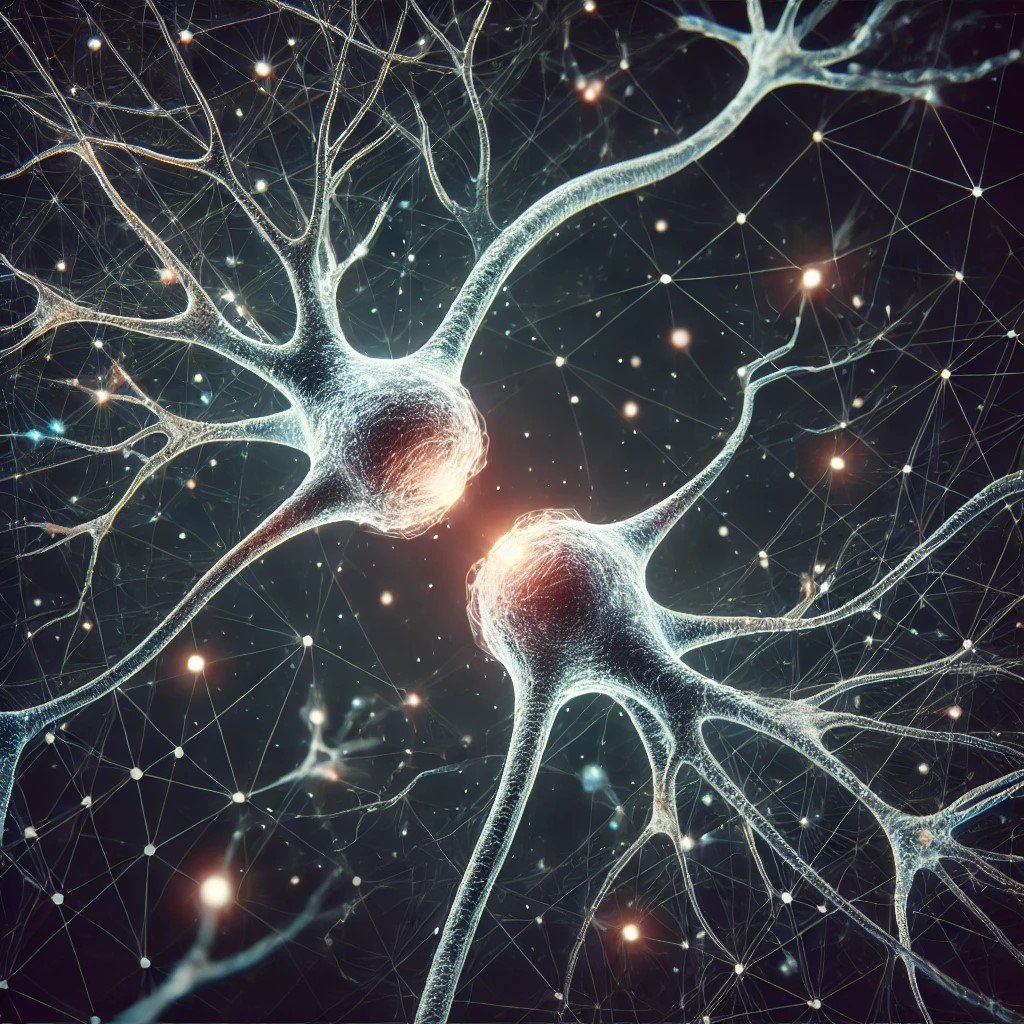Artifical synapses for neuromorphic computing
Neuromorphic engineering is already revolutionising computing by developing electronic devices that emulate neuro-biological architectures at the hardware level. Such devices promise to decrease substantially the energy consumption of computing and extend its functionalities, allowing artificial intelligence (AI) to be embedded everywhere and benefit modern societies through brain-like capabilities.
We develop novel materials and device architectures, such as vertical and coplanar memristors, to achieve a significant breakthrough in neuromorphic hardware. More specifically, we use:
redox-active molecules, like polyoxometalates and metal oxides
materials with tunable optoelectronic properties, like organic semiconductors
mixed ionic-electronic semiconducting materials, like perovskites
nanomaterials, like 2D transition metal dichalcogenides and 0D quantum dots
We explore neuromorphic computing with light as we believe it can overcome the fundamental scaling limitation, as it operates faster and bears the potential for orders of magnitude lower power dissipation than electronics. Emerging applications can already be found in smart imaging, where light sensors are designed to mimic the spatio-temporal nature of human vision, not only by turning light into electrical signals but also by capturing and sending the useful-only (non-redundant) information to the processing unit in an extremely efficient manner. The so-called computer vision is particularly relevant to autonomous (self-driving) vehicles and AR/VR, since this type of light sensor offers increased speed, greater dynamic range, and decreased computational cost.
-
1) 2D transition metal dichalcogenides for energy-efficient two-terminal optoelectronic synaptic devices. Babu R. S., Georgiadou D. G. Device, in press. https://doi.org/10.1016/j.device.2025.100805 (2025).
2) ZnO-based memristor for random number generator: The case of current compliance. Hajiabadi Z., Purnama I., Nugroho A., Cao H., Chandrasekaran S., Mukhtar H., Georgiadou D. G., Chong H. M. H. , Thomas D. B. , Simanjuntak F. M. Electronics Letters, 61 e70165. doi: https://doi.org/10.1049/ell2.70165 (2024).
3) Leaky Integrate-and-Fire Model and Short-Term Synaptic Plasticity Emulated in a Novel Bismuth-Based Diffusive Memristor. Zawal, P., Abdi, G., Gryl, M., Das, D., Sławek, A., Gerouville, E. A., Marciszko-Wiąckowska, M., Marzec, M., Hess, G., Georgiadou, D. G. & Szaciłowski, K. Advanced Electronic Materials 10, 2300865, doi: https://doi.org/10.1002/aelm.202300865 (2024).
4) High-Performance TiN/TaOx/TiN Selectors With Short-Term Memory Characteristics. Roy, S., Napari, M., Georgiadou, D. G., Chandrasekaran, S., Chakrabarti, B. & Simanjuntak, F. M. IEEE Transactions on Electron Devices 71, 5775-5778, doi: https://doi.org/10.1109/TED.2024.3422949 (2024).
5) γ-Ray-Induced Effects in Al:HfO₂-Based Memristor Devices for Memory and Sensor Applications. Prasad, O. K., Chandrasekaran, S., Napari, M., Purnama, I., Nugroho, A., Georgiadou, D. G., Chung, C. H., Chang, K. M. & Simanjuntak, F. M. IEEE Electron Device Letters 45, 2082-2085, doi: https://doi.org/10.1109/LED.2024.3454294 (2024).
6) 2D MoS2 monolayers integration with metal oxide-based artificial synapses. Gautam, M. K., Kumar, S., Rani, S., Zeimpekis, I. & Georgiadou, D. G. Frontiers in Nanotechnology 6, doi: https://doi.org/10.3389/fnano.2024.1400666 (2024).
7) High On/Off Ratio Carbon Quantum Dot–Chitosan Biomemristors with Coplanar Nanogap Electrodes. Raeis-Hosseini, N., Georgiadou, D. G. & Papavassiliou, C. ACS Applied Electronic Materials 5, 138-145, doi: https://doi.org/10.1021/acsaelm.2c00979 (2023).
8) Colossal Tunneling Electroresistance in Co-Planar Polymer Ferroelectric Tunnel Junctions. Kumar, M., Georgiadou, D. G., Seitkhan, A., Loganathan, K., Yengel, E., Faber, H., Naphade, D., Basu, A., Anthopoulos, T. D. & Asadi, K. Advanced Electronic Materials 6, 1901091, doi: https://doi.org/10.1002/aelm.201901091 (2020).
9) Large-area plastic nanogap electronics enabled by adhesion lithography. Semple, J., Georgiadou, D. G., Wyatt-Moon, G., Yoon, M., Seitkhan, A., Yengel, E., Rossbauer, S., Bottacchi, F., McLachlan, M. A., Bradley, D. D. C. & Anthopoulos, T. D. npj Flexible Electronics 2, 18, doi: https://doi.org/10.1038/s41528-018-0031-3 (2018).
10) Semiconductor-Free Nonvolatile Resistive Switching Memory Devices Based on Metal Nanogaps Fabricated on Flexible Substrates via Adhesion Lithography. Semple, J., Wyatt-Moon, G., Georgiadou, D. G., McLachlan, M. A. & Anthopoulos, T. D. IEEE Transactions on Electron Devices 64, 1973-1980, doi: https://doi.org/10.1109/ted.2016.2638499 (2017).

